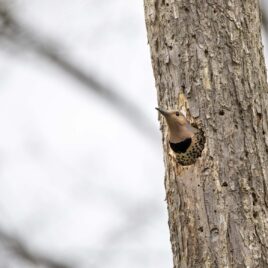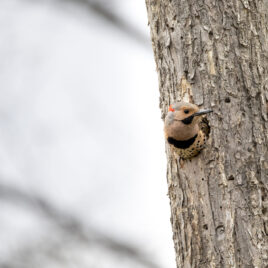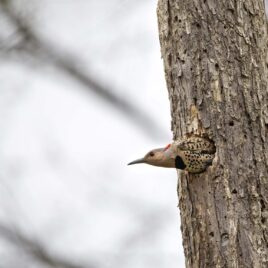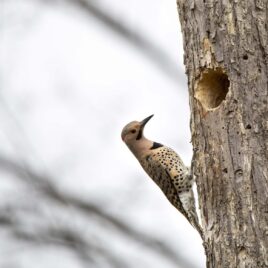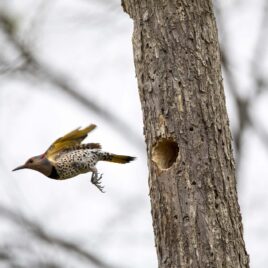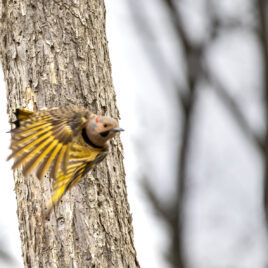Yellowhammer, clape, gaffer woodpecker, harry-wicket, heigh-ho, walk-up, yarrup, gawker bird. How can one species have so many common names?
Well, it’s no surprise when the Northern Flicker occupies a wide range all the way from Alaska to Nicaragua!
Habitat: Open forest, open country– requires open ground for foraging.
Diet: The Northern Flicker (Colaptes auratus) is the only woodpecker that feeds on the ground frequently. These birds primarily eat insects, and particularly ants, which can make up 45% of their diet. Their beaks allow them to break through underground colonies to reach the nutritious larvae lying underneath. Besides ants, they will also eat insects such as flies, grubs, and caterpillars. In the winter, their diet can include berries and seeds of plants such as poison oak, poison ivy, sumac, dogwood, grape, bayberries, hackberries, elderberries, sunflower & thistle seeds; many of which can be found at Hawk Valley Farm. Clearly, they’re not specialists when it comes to food!
An ecological *and* economical benefit to their lack of specialization is that Northern Flickers eat the European corn borer, a moth which feeds on corn as well as other crops. These moths are estimated to have cost the United States agricultural industry more than $1 billion annually in crop loss and population control.
Adaptations: It was previously thought that there were two separate species of Flickers in the US; the Yellow-shafted Flicker in the east/north, and the Red-shafted Flicker in the west. However, these different forms interbreed in areas where their ranges come in contact. On the western Great Plains, there are intergrades of both subspecies meaning that these populations have characteristics of both Red & Yellow-shafted Flickers.
Besides their color, their migratory patterns are also different with the Yellow-shafted Flicker migrating from Alaska to Canada, down through the Atlantic Coast. The Red-shafted Flicker migrates a shorter distance, usually only moving from mountains to lowlands.
Flickers exhibit a behavior called anting, which means that they use ants while preening (grooming their feathers). They rub ants on their feathers and skin which provides them a coating of formic acid that helps to keep them free of pests and parasites.
Characteristics: The Northern Flicker’s size is between a robin and a crow, so they are fairly large. They are most easily identifiable by their color pattern. The Yellow-shafted Flicker seen in the eastern US has a tan face, gray crown, and a bright rose red crescent on the back of its neck. When in flight, these birds flash bright yellow feathers on the undersides of their wings and tails.
(Originally featured as November 2021 Flora & Fauna Fridays.)


